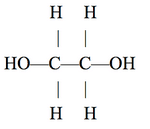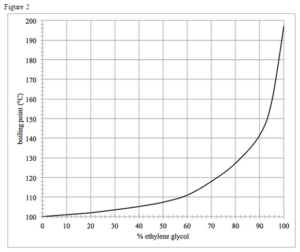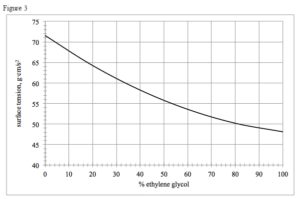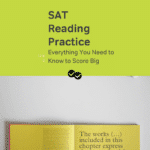
Students see the biggest increases in their scores when they practice for the ACT regularly. By consistently following an ACT prep schedule, you can improve your score in as little as an hour a day. Sounds pretty good, right Get started with this daily habit today by reviewing Magoosh’s ACT Questions of the Day!
(These questions, by the way, are drawn from Magoosh’s full free ACT practice test, which I also recommend!)
Ready to practice?
On this page, you’ll find an ACT Math Question of the Day and an additional ACT Question of the Day from one of the four ACT sections: English, Reading, Math, and Science. The ACT Math Question of the Day will update every day of the month, so make sure to come back and check it everyday!
The other questions of the day are all available right now, labeled by day of the week. You can wait for the day of the week to try a particular question, or if you are really feeling you need some more ACT questions right now, go ahead and jump down to each day’s ACT Question of the Day using the links below.
Best of luck practicing and improving your score!
ACT Math Question of the Day
A municipal water tank is a large cylinder with a radius 20 feet and a height of 30 feet. Assuming that the tank is filled with water, what is the approximate volume of the water in cubic feet?
ACT Question of the Day
Click the buttons to jump to each day’s ACT practice question.







Monday’s ACT English Question of the Day
This ACT Question of the Day is based on the following passage.
About four hundred years ago, in 1612, Northwest England was the scene of England’s largest peacetime witch trial: the trial of the Lancashire witches. Twenty people, mostly from the Pendle area of Lancashire, were imprisoned in the castle as witches. In the end, ten were hanged, one died in jail, one was sentenced to the stockades, and eight were acquitted. How did this witch trial come about, and what accounts for its static fame?
We know so much about the Lancashire Witches because the trial was recorded in unique detail by the clerk of the court Thomas Potts who published his account soon afterwards. Robert Poole recently published a modern-English edition of their book, together with an essay piecing together what we know of the events of 1612. It reveals how Potts carefully edited the evidence, and also how the case against the “witches” were constructed and manipulated to bring about a spectacular show trial.
It all began in mid-March when a peddler from Halifax named John Law had a frightening encounter with a poor young woman, Alizon Device in a field, near the town of Colne. He refused her request for pins, and there was a brief argument during which he was seized by a fit that left him with “his head drawn awry, his eyes and face deformed, his speech not well to be understood; his thighs and legs stark lame.” We can now recognize this as a stroke, perhaps triggered by the stressful encounter. Alizon Device was sent for and surprised all by confessing to the bewitching of John Law, and then begged for forgiveness.
When Alizon Device was unable to cure the peddler the local magistrate, Roger Nowell, was called in. “With weeping tears,” Alizon explained to Nowell that she had been led astray by her grandmother, “old Demdike,” well-known in the district for her knowledge of old prayers, charms, cures, and curses. Nowell quickly interviewed Alizon’s grandmother and mother, as well as Demdike’s supposed rival, “old Chattox.” Their panicky attempts to explain themselves and shift the blame to others eventually only ended up incriminating them, and the four were sent to Lancashire prison in early April to await trial at the summer courts.
Choose the option for the underlined portion that best expresses the idea in standard written English and that is most consistent with the style and tone of the passage. If the original version is correct, select NO CHANGE. If there is a question provided, choose the best answer to the question.
Robert Poole recently published a modern-English edition of their book, together with an essay piecing together what we know of the events of 1612.
A. NO CHANGE
B. its
C. it’s
D. his
Click to view the Answer and Explanation.
Tuesday’s ACT Science Question of the Day
Malaria is an infectious disease that kills more than 600,000 people every year. Several species of the genus Plasmodium cause malaria, with two of the most common being Plasmodium falciparum and Plasmodium vivax. Though both species cause a very similar illness, P. falciparum malaria is more likely to result in fatalities than P. vivax malaria, while P. vivax malaria is more likely to recur — to return after a period of time during which the patient is healthy and has no parasites present in the blood.
The two species of malaria parasites respond differently to antimalarial medications, but in many areas where malaria is common, testing to determine what type of malaria a patient has is not widely available. Therefore malaria treatments are often tested against both species of the parasite, and first-line malaria treatments in these regions ideally should be effective against both parasites.
Experiment 1
For many years, public health professionals in Papua New Guinea have recommended a treatment regimen, Drug Combination A, as a first-line malaria treatment. Recently a new treatment regimen, Drug Combination B, has been proposed as a potential replacement for Combination A, and a study was conducted to compare their effectiveness.
Children entering a local health clinic with malaria symptoms were tested to determine which Plasmodium species they carried. The patients were then randomly assigned Drug Combination A or Drug Combination B, and their blood was tested periodically for the presence of parasites.
Figure 1

Experiment 2
On rare occasions, patients have severe allergic reactions to a compound that is found in both Drug Combination A and Drug Combination B. In these cases, a second-line treatment must be used. A second study was conducted to determine which of several drug combinations would be the best second-line drug to recommend for use in Papua New Guinea. Table 1 shows the treatment response to the second-line drug combinations.
Table 1

Choose the option that best answers the question.
Suppose a patient is brought to the clinic with a life-threatening case of P. falciparum malaria. As the patient’s condition is deteriorating quickly, it is essential that they be given the treatment that eliminates parasites from their blood within 7 days. Based on the data from Experiments 1 and 2, which treatment should they be given?
A. Drug Combination A
B. Drug Combination D
C. Drug Combination E
D. Drug Combination B
Click to view the Answer and Explanation.
Wednesday’s ACT Math Question of the Day
Choose the option that best answers the question.
The average of x and t is y. If s = 2y, what is the average of s, x, and t in terms of y?
A. 3y
B. 2y
C. 5y/3
D. 4y/3
E. y
Click to view the Answer and Explanation.
Thursday’s ACT Reading Question of the Day
The opening scene of the film Marie Antoinette (Sofia Coppola, 2006) is set in Austria: a static image of a young Marie Antoinette sleeping in a dark room. The establishing shot that follows shows Schönbrunn Palace in the early, grey morning light, before reverting to a close-up of Marie Antoinette waking up. Completely unaware of what the future has in store for her, Marie Antoinette allows the attendants to dress her just as on any other day. While she waits for them to lace the corset and finish her hair, she appears unconcerned and plays with her little pug. Dressed in a soft, velvety and lavender blue two-pieced dress, she then meets with her mother, before being sent off to France.
The theme of dressing and redressing, which is accentuated in the opening scene, is pursued throughout the film Marie Antoinette, establishing costume as a significant feature for reading the movie. Costumes help in the construction of cinematic identities. Their colors and configurations intervene with the actors’ movements, allowing further characterization on a more associative level. A character’s story is visualized through clothing. At first glance the attire of a filmic character connotes time period, social status, and whether or not the cinematic world refers to fantasy or reality. A closer examination reveals more subtle details: a character’s state of mind, motivations, and how the character wishes to be perceived.
Costume design involves conceptualizing and creating garments that capture and define the personalities of fictional characters and are therefore intended to embody the psychological, social and emotional condition of the character at a particular moment in the screenplay. For instance, one of the scenes in the “I Want Candy” montage in the film shows Marie Antoinette trying on new high-heeled shoes, and next to her on the floor lays a pair of well-worn, light blue Converse boots. The anachronistic feature is a cross-reference to today’s fashion and youth culture, reminding the audience that this is a film about teenagers and not really an 18th century period piece.
Additionally, in Marie Antoinette, color is used in a nuanced way, not only to describe the characters, but also in order to facilitate a specific look for the whole movie. On a conceptual level, the colors are used to tell a story. In this case, a story with an unhappy ending. In this early stage of Marie Antoinette’s time at Versailles, the colors worn and applied are light and icy, more sorbet-like. In the middle of the film—depicting her party years—her gowns become most dessert-like in their choice of color and even in cut, with bright yellow, pink and blue combinations creating a macaroon effect with the ornamentation of petticoats and skirts. Her dresses are modified in configuration as well and become bolder, with more daring garnish. In the final sequences of Marie Antoinette’s life at Versailles, the colors grow a bit darker, faded, and become stricter. The fabric seems to change as well, and the dresses look heavier and more formal. The whole mise-en-scène subsequently becomes darkened and the film ends with a frame of her wrecked apartment overlaid with the sound of the guillotine as it slices the air (implying Marie Antoinette’s beheading).
The color palette of the costumes might be translated to a depiction of Marie Antoinette’s inner journey. The range of colors are comparable to those of the seasons, beginning with the light, spring-like pastels for her youth; bright summer colors representing her party years; and the darker, autumn-like shades for the last period at Versailles. As such, the costumes have metaphoric meaning; they are symbols of a stage in life and a state of mind. The costumes for Marie Antoinette are thus understood as being designed in order to communicate the inner experiences of the characters.
Ultimately, costume design in Marie Antoinette allows us to quickly grasp what the characters are all about. The actual changes in French fashion that began in the 1780s are in the film used as a way to visualize Marie Antoinette’s state of mind. The costumes conspire with the other cinematic features, generating a symbolic network for telling a story through dress.
Choose the option that best answers the question.
The main point of the passage is that:
A. Marie Antoinette uses the symbolism of costumes more than many other films like it.
B. Costume design in Marie Antoinette allows audiences to more easily understand the psychological state of the main character.
C. Marie Antoinette’s use of anachronous costuming helps audiences today better relate to the movie’s time period.
D. Costume design in Marie Antoinette allows the audience to more easily distinguish between the personalities of the different characters.
Click to view the Answer and Explanation.
Friday’s ACT English Question of the Day
Writing a Personal Essay
[1]
Acclaimed novelist, Toni Morrison, likens memory to the way the Mississippi River, and other rivers like it, years after being straightened and pushed into levees by the Army Corps of Engineers, still strain at times to flood its banks and revisit the original, meandering route. “All water has a perfect memory and is forever trying to get back to where it was,” Morrison tells us, “Writers are like, that remember where we were, what valley we ran through, what the banks were like, the light that was there, and the route back to our original place.”
[2]
I have worked with so many writers who worry their inconsistent memory is not sharp enough, exact enough, or reliable enough for them to capture childhood moments with any authority, and, of course, science had proven the fallibility of memory time and time again. [A] But what can we do, as writers?
[3]
It has been my experience that most of us remember more than we think that we do. [B] It just takes some time to stop, think, and take our minds back to the original riverbanks. Once we have latched onto one of them—the color of the tablecloth on Aunt Jean’s holiday table and the old fashioned centerpiece she inherited from her grandmother, perhaps—that tiny, small foothold of memory is often the impetus to memories that can help to unloosen yet another, and then another, small detail. [C] These past moments are in your mind still, Morrison is telling us, waiting for us to uncover the moments we have since forgotten. Bringing it to the front just takes time.
[4]
In the end, all we promise the reader is that we have done our absolute best to fact-check our memories, and that we have tried our hardest to be accurate. [D] Smart readers know that no other guarantee is necessary or possible.
[5]
So, go to the river of memory. Find one small detail, and start writing for just ten minutes, trying to remember one small detail at a time. See where it takes you today.
After reading the passage, choose the option for the underlined portion that best expresses the idea in standard written English and that is most consistent with the style and tone of the passage. If the original version is correct, select NO CHANGE. If there is a question provided, choose the best answer to the question.
In the end, all we promise the reader is that we have done our absolute best to fact-check our memories, and that we have tried our hardest to be accurate.
A. NO CHANGE
B. Additionally,
C. However,
D. As a result,
Click to view the Answer and Explanation.
Saturday’s ACT Reading Question of the Day
Passage A
Edmund Burke, the British writer of political theory, believed government had been improved by every preceding generation up to his own. He saw the successive effort of early Greek democracies and Byzantine emperors and the rules set forth by the Magna Carta coalescing into a consummately effective—though far from perfect—society. In his eyes, the British Parliamentary system of his day represented the realization of all of the efforts theretofore drawn together by the work of Enlightenment philosophers in the 18th century. It was the fullest expression of liberty balanced with order yet known to man. A deep sense of gratitude to his forbears reigned in every word from his lips and from his pen.
Due to this national pride and patriotism, Burke’s dismissal of the French Revolution brings little surprise to the student of history. Yet, his positive attitude toward the American Revolutionaries, so uncommon in his time and station, was no less a natural expression of his political stance.
Years before the fateful July fourth, Burke addressed the British House of Commons regarding the trouble stirring far across the Atlantic. The British had treated the American Englishmen unjustly, he argued. Taxation without representation violated the principles foundational to Parliament. Taking a long and careful view of history, Burke believed that the colonists had both tactical and ideological advantages; they wielded the two-edged sword of power and virtue. As long as the English people exploited their overseas brethren, they could not hope to suppress the colonists with violence.
Burke’s call to action went unheeded, and the American Revolution began. Still appealing to his perennial belief in the superiority of the Parliamentary system of government, he pled with the House, “As long as you have the wisdom to keep the sovereign authority of this country as the sanctuary of liberty, the sacred temple consecrated to our common faith, wherever the chosen race and sons of England worship freedom, they will turn their faces towards you. The more they multiply, the more friends you will have; the more ardently they love liberty, the more perfect will be their obedience. Slavery they can have anywhere. It is a weed that grows in every soil. They may have it from Spain, they may have it from Prussia. But, until you become lost to all feeling of your true interest and your natural dignity, freedom they can have from none but you.” Despite his wise words, the English still sought to enslave the colonies, thereby losing America.
Passage B
A refugee torn from the prisons of the French Revolution, political philosopher Thomas Paine ended his life without the slightest loss of confidence in the beauty and value of revolution. As he had stood with America throughout his boyhood and early manhood, Paine stood with France even as it sought to kill him. For Paine, the world had been a brutal, unjust place until the Enlightenment in the 1700s. In the light of liberty and intellectual freedom, the dusty thrones and inbred monarchy that filled Europe’s ruling class seemed a matter for history books rather than newspapers.
Paine championed these views and praised the necessity of the American Revolution in his famous pamphlet, Common Sense. Read in bars and parlors throughout the colonies, the straightforward, sometimes vulgar language of Paine’s writings provided the battle cry of an Enlightened people against the old, cold ways of King George III. It argued that ordinary people had not only the ability and the right to contribute to the structure of their leadership, but even the duty.
What was true in America was doubly true in France. A little over a decade after arguing the American people into shuffling off the shackles of the English monarchy, Paine joined what he saw as a parallel effort in France. When the peasants deposed the king and tore apart the structure of their government, Paine lauded the end of tyranny. The political philosopher joined the effort in France with almost complete accord, although he did try to argue against the execution of King Louis XVI, who had been an ally to the Americans in their own fight for independence. Even after that execution, Paine went on to write headstrong defenses of the French Revolution until the tides turned. In the unstable atmosphere of the French political landscape, Paine soon found himself on the wrong side of the ruling powers. Imprisoned and sentenced to death, Paine relied on allies from America and England to help him escape.
Despite this accident of history, Paine refused to speak against the French Revolution. To his death, he continued to claim that individual safety and stability ought to be sacrificed on the altar of liberty.
Choose the option that best answers the question.
The author’s attitude toward Edmund Burke in Passage A can best be described as:
A. interest and wariness.
B. skepticism and apprehension.
C. amusement and sentimentality.
D. reverence and fascination.
Click to view the Answer and Explanation.
Sunday’s ACT Science Question of the Day
Ethylene glycol, a popular industrial chemical used in the manufacture of polyester fibers and in industrial applications like antifreeze, has the structure shown below:

Figures 1-3 each show how a property of solutions of ethylene glycol in H2O varies as the concentration of ethylene glycol increases at 1 atmosphere (atm) of pressure. Concentration is given as the percent ethylene glycol by mass in H2O. Figure 1 shows how the freezing point varies with % ethylene glycol. Figure 2 shows how the boiling point varies with % ethylene glycol. The surface tension is the property of the surface of a liquid that allows it to resist an external force due to the cohesive forces between molecules in the liquid. Figure 3 shows how surface tension varies with % ethylene glycol at 25°C.



Choose the option that best answers the question.
According to Figure 1, at 1 atm, the melting point of pure 100% ethylene glycol is closest to which of the following?
A. 0°C
B. -13°C
C. -33°C
D. -52°C
Click to view the Answer and Explanation.
A Final Word
Keep practicing every day and you’ll see your score improve in no time. If you want to move on from attempting one ACT Question of the Day to multiple ACT questions each day, check out Magoosh ACT Prep for more than 500 additional practice problems!






Leave a Reply